THE QATSPY® Quapaw Aviation Tactical Sportswear Yukan Outfitters
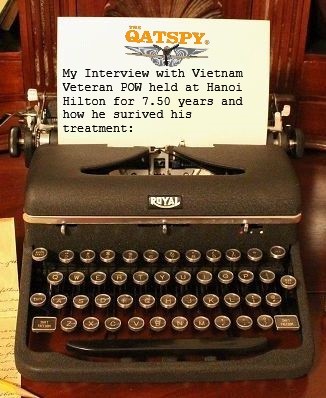
By: Charles W. Boatright

NOTE: At the end of this article is my OPERATION DOG TAGS (Defender’s Oasis Golf Tactical Athletes Geared Sports) for those that like to start golf Clubs for Veterans.
Interview with Col. Hall The Impact of The Sport of Golf on a P.O.W. Veteran– My Interview with Colonel George Robert Hall that was held at the Hanoi Hilton for Over Seven Years that Survived by his Golf Game.
One of the most honored occasions that I’ve ever experienced was meeting a Vietnam War Veteran and P.O.W., who was held at the infamous Hanoi Hilton in North Vietnam for seven-and-a-half-years. I had just concluded a meeting with a major supplier (ALCOA) at the Hattiesburg Country Club in south Mississippi, when I met U.S. Air Force Pilot, Colonel George Robert Hall who was shot down over North Vietnam on September 27, 1965. He was at the country club raising money for the Veterans’ Association, when I had an opportunity to sat down with Colonel Hall for a interview. Hattiesburg is about 80 miles south of Madison, MS, on U.S. Hwy 49 South where I live.
The reason that I recognized Colonel Hall was from a book that I read about a golfer that used his love of golf to sustain himself through horrendous conditions as a P.O.W. Colonel Hall, with other P.O.W’s., was able to used fields of science, math, language, and in this case sports to survive. Colonel Hall particularly used golf to not only keep his sanity under adverse treacherous conditions but to maintain his single-digit handicap of four. The title of that book that I read was by Colonel Edward Hubbard entitled, “Escape From the Box.”
Having an opportunity to have an interview with Colonel Hall would be ultimate pinnacle of any sports psychologist career to gather and develop techniques to use in teaching and training their athletes in how to deal with opportunities and obstacles in their performance. The term Yukan means strong, resourceful, and vigorous warrior. These POW’s are the definition of a warrior in what they had to deal with and survive.
The Mentalization of Sports Psychology
During his confinement, Colonel Hall heightened his mental visualization skills to develop a virtual golf course in his mind in his (7.50 foot square cell). He imagined himself dressing for each round of golf by putting on his golf socks, pants, shoes, T-shirt, and pants, and picking up his golf cap and bag and heading to the course. He mentally dealt with his nerves on the first tee box and played each and every hole of his home course and Pebble Beach, without missing a single sight and sound of each stroke. He remembered writing down the score for each hole. He pictured the fairways, greens, and the trees, felt the wind and its direction, including the rough and the speed of the greens.
Colonel Hall imagined himself standing behind the ball to get his alignment, going through his setup routine, presetting his wrists, and taking the club back up to the top of his swing, and then dropping the club back down into the slot and through the strike zone, similar to how Tom Watson describes in the March 2003 issue of Golf Digest. He focused on the part of the golf ball that he wanted to impact. He heard the sound that the clubface made with the ball and held his photo-finish position.
The Biggest Stage in Golf, Playing in a PGA Tournament
Colonel Hall mentally maintained his golf swing muscle memory, even as a P.O.W. Upon his release, on February 12, 1973 from the Hanoi Hilton, the first thing that he wanted to do was to play his first round of golf. He did a little better than that. In less than six weeks from his release, weighting 100 pounds less, he was playing on one of the biggest stages in golf. On March 21, 1973, Colonel Hall was invited to play in the 1973 Greater New Orleans P.O.W. Pro-Am Open, where he shot a 76, his handicap of 4 after seven-and-a-half years as a POW.
The Sport of Golf is a Passion of Mine that I like to read about and write about
The sport of golf is a passion of mine that I don’t only play, but have developed coaching passion and pursuit for as well. Not only do I have the pleasure of writing about the sport of golf, but reading the intriguing accounts of how the sport of golf has impacted people’s lives. I started Operation DOG TAGS to help our Veterans and others dealing with PTSC (Post Traumatic Stress Condition). You don’t have to be a Veteran of War to develop PTSC.
I enjoy research and studying those in the sport of golf, like- Old and Young Tom Morris, Babe Zaharias, Babe Ruth, Bobby Jones, Sr., President Eisenhower, Ben Hogan, Byron Nelson, Francis Ouimet, Arnold Palmer, Colonel Hall, Jack Nicklaus, Nick Price, Sir Nick Faldo, Tiger Woods, Jordan Spieth, Brooks Koepka, and Justin Thomas, just to name a few.
What could be more rewarding than to not only reading about the impact that sports has on people dealing with adversity, but actually meeting and sitting down with a POW in person and having an opportunity to interview them.
An Interview with a Vietnam P.O.W. from Hattiesburg, Mississippi
I would never imagine that I would have this opportunity to meet one of these POW’s that was also a golfer. But, in March of 2002, while I was in Hattiesburg, Mississippi, about 82 miles south of where I live in Madison, MS, I had that opportunity to meet Colonel George Robert Hall.
I was attending a meeting with an ALCOA representative at the Hattiesburg Country Club, where the Magnolia Classic started in 1967. This tournament is now called the Sanderson Farms Championship, held at the Jackson Country Club. This tournament benefits the UMMS Batson Children’s Hospital.
As I was leaving the meeting, I noticed a Vietnam Veteran who was setting up for a golf charity to support Veterans. I never pass up an opportunity to support our Veterans and to meet them. I recognized that this Veteran looked very similar to Colonel Hall in a book that I read. I was thinking, as I was walking to donate to the charity, that there are too many coincidences for this not to be Colonel Hall, especially being in his hometown. I was right!
Colonel George Robert Hall, a Veteran from the Hanoi Hilton
Here’s a little background information on Colonel Hall, and his impact on the sport of golf. I hope that after you read this article and interview that you would find Colonel Hall’s story as fascinating as I did while doing this interview for what I called my Xerox Box Golf Project.
Colonel Hall, a Veteran and P.O.W. at the North Vietnam Hanoi Hilton for over seven years, after he was shot down during an aerial combat mission on September 25, 1965. Colonel Hall explained how the mental game of golf was key to his survival. Bobby Jones’ quote- Golf is a game that is played on a five-inch course – the distance between your ears.
Col. Hall proved that was the case in our interview. This underlines that golf is more mental than physical, and that can be vital to Veterans who are returning home. Colonel Hall is the foremost authority on applying Sports Psychology on what he survive during his treatment at the Hanoi Hilton. Any sports psychologist would find this opportunity a gold mine of research and techniques.
For most golfers and sports psychologist that realize the sport of golf is a mental game played between the ears, then they should find this encouraging, because the mind isn’t limited to limitations. The body has to function under various limitations that the mind doesn’t. The mental game of golf offers advantages that we all have an equal opportunity to achieve a single-digit handicap. Our mind can create conditions and situations that our body is limited by or can excel beyond physical limitations.
Bio of Colonel Hall
Colonel Hall attended the University of Mississippi, Ole Miss, for one year before accepting an appointment at the Naval Academy in Annapolis, Maryland. Col. Hall was the captain on the golf team with a handicap of four (4). The four handicap would become an important footnote in The Colonel Hall story.
After graduating from the Naval Academy, Colonel Hall served in the United States Air Force and was later deployed to Vietnam. While on an aerial combat mission on September 27, 1965, Colonel Hall was shot down over North Vietnam. He was captured and held at the Hanoi Hilton, a prisoner of war compound.
Colonel Hall, along with the other prisoners, was mentally and physically tortured, starved, and kept in solitary confinement. They were given only 300 calories per day just to survive. At the Hanoi Hilton, Colonel Hall’s world consisted of a seven-and-a-half square foot cell, without basic necessities. The prisoners had little or no contact with the outside world or each other. The only lifeline the prisoners had was their virtual world that they created in the theater of their minds.
Colonel Hall Mental Game of Golf
NOTE: From this interview, Col. Hall proved that sports are actually mental games played in the space between one’s ears that can benefit us in other areas of our life. This became the reason why I started Operation DOG TAGS (Defender Oasis Golf Tactics Athletic Geared Sport)
In Colonel Hall’s case, his virtual world was the golf courses that he mentally created and played in his confined cell. He memorized every aspect of each course that he had played, down to each hole, tree, rough, fairway, and the speed of the greens. Every day Colonel Hall would go through his routine until he was released on February 12, 1973, with 590 other P.O.W’s.
The significant advantage the sport of golf provides our Veterans returning home from the battlefield is the ability to deal with their anxieties associated with dramatic experiences.
During his confinement, Colonel Hall heightened his mental and visualization skills to develop a virtual golf course that he played in order to maintain his sanity. Colonel Hall, in his mind, created what he referred to as his Pebble Beach. Colonel Hall imagined himself dressing for his round of golf each day by putting on his socks, pants, shoes, T-shirt, and golf shirt, and picking up his golf cap and golf bag and heading to the course.
Colonel Hall mentally dealt with his nerves on the first tee box and played each and every shot and hole of his home course and others that he played during his college career. Without missing a single trajectory of each shot, Colonel Hall played out each hole, including taking in account wind conditions. He counted the steps that he would have walked between each shot and mentally wrote down the score for each hole.
Colonel Hall imagined standing behind the ball to get his alignment, going through his setup routine, presetting the wrists action in his golf swing, and taking the club back up to the top of his swing. Colonel Hall felt his club dropping back down into the slot and through a baseball-type strike zone. The key as Colonel Hall explained was keeping his golf swing relative to his hands and just swinging the handle of the golf club. Colonel Hall focused on the part of the golf ball that he wanted to impact with his thumb. He heard the sound that the clubface made with the ball and held his photo finish position.
Colonel Hall mentally maintained his golf swing muscle memory, even as a P.O.W. far removed from the golf course. Upon Colonel Hall’s release from the Hanoi Hilton, the first thing that he wanted to do was to play his first round of golf, and have his first cup of Coca-Cola with ice.
Colonel Hall did a little better than that. In less than six weeks from his release on February 12, 1973, he was playing on one of the biggest stages in golf. On March 21, 1973, Colonel Hall, within six weeks, was invited to play in the 1973 Greater New Orleans P.O.W. Pro-Am Open, where he shot a 76, his handicap of four (4).
After leaving the Air Force, Colonel Hall became Vice-President with the Coca-Cola Company in Hattiesburg, MS, where he also flew the corporate jet. Colonel Hall and I both share our love of aviation.
After seven-and-a-half years of not even picking up a golf club, or maintaining any form of physical or strength and physical conditioning, Colonel Hall stepped on a larger stage than his prison cell. Not many professional golfers would even consider attempting such a feat. Colonel Hall lost about 100 pounds of his total body weight, that including muscle mass, during his captivity and still had an outstanding performance, shooting in the single-digits. He had my total undivided attention during our interview.
Again the weight that Colonel Hall lost was due to the P.O.W.’s daily rations of approximately 300 calories per day, as opposed to the average 1,800 to 2,000 calories. (By the way, Jack Nicklaus won the 1973 Greater New Orleans Open.)
Interview with Colonel George Robert Hall, an Avid Golfer
After I made a donation to the Veteran’s charity, I asked Colonel Hall if he had time for a short interview for research that I was doing for my Xerox Box Golf Project. Colonel Hall was more than willing to do the interview. We sat down at a small table in the clubhouse.
Below was my interview that I had with Colonel George Robert Hall, in March of 2002, at the Hattiesburg, MS Country Club:
My Q & A with Colonel George Robert Hall, a Vietnam P.O.W. at the Hanoi Hilton
Question No. 1
Boatright: “What did you use as a golf club?”
Colonel Hall: “I used a stick when the guard wasn’t observing us and my left thumb when they were observing us in our cells to represent the handle of the club, and placed my right hand around the left thumb or the stick to represent the handle of the club.
This also gave me the opportunity to maintain the correct grip pressure on the handle of the club and feel that is essential to me. This also allowed me to preset my wrist action in the golf swing, as I did when I played golf on a regular basis stateside. My main objective was to feel my wrist action in the golf swing.”
Question No. 2
Boatright: “What was the key component in your golf swing to give you the most realistic feel, since you did not have an actual golf club or experience the results of your golf shots?”
Colonel Hall: “Everything had to be associated with my thumbs and wrists. I could not think about the floor as the ground for my point of reference. I realized if I could preset my wrists action in the golf swing sequence properly based on specific techniques, I knew that I had followed the correct golf swing sequence. If I could feel how the my left thumbs pointed toward my right elbow, and how my wrists looked and were set in the golf swing, I could virtually set and execute my golf swing and shot that I wanted.”
Question No. 3
Boatright: “So, your point of reference was waist level at your hands and how your wrists were set?
Colonel Hall: “Yes, to be more specific, my thumbs and wrists were set. I kept all the impact, essentially, at the level of my hands and thumbs, similar to how a baseball player uses a bat to take batting practice in T-ball practice. Matter of fact, I thought about taking batting practice similar to what they refer to as tee ball in my cell.”
Question No. 4
Boatright: “I have centered my muscle memory on three (3) points, my thumbs (called the Thenars), the left and left Ulna Styloid Processes and my right elbow. Did you center or keying in on a particular points or muscle to execute your golf shot?”
Colonel Hall: “Yes, I read about how Ben Hogan described how he used his Thenars as being a key part of his golf swing to hinge and supinate his wrists and hands. This allowed him to open and close his clubface properly.”
Colonel Hall’s Question: “How did you determine the significance of the Thenars in your golf swing sequence, I wasn’t aware of many people knowing about the Thenars in golf?”
Boatright Answer: “In Kinesiology, my professor, Dr. Bunch, stressed the importance of three points that could be used in the baseball-type swing to produce base hits and reduce injuries to the wrists, lower forearms, and lower back. The wrists can be preset using Ulna Styloid Processes to perform what I call the PALMER Technique and in my case the left thumb to perform what you reference as the Hinge maneuver. These three components are essential in presetting the golfer’s wrists and the Thenars.
These points presets the left and right Brachio-Radialis (BRACHS) Muscles which is a particularly unique muscle in the entire golf swing sequence since these muscles can pronate and supinate and flex (or bend) the forearms at the elbow. The Thenars are unique in that they are the strongest and most dexterous muscles in the wrist action and in the golf swing that have direct contact with the golf club handle.”
Colonel Hall: Now you gave me some validation to why I concentrated on the muscle memory that I used in my golf swing sequence of the wrist.
Boatright: Yes sir, I refer to my muscle memory sequence as The Critical Swing Path, keying in on the wristband muscle/tendon in my left palm. Another training technique that I use are a pair of kickboxing gloves, because of the wristbands. I showed Colonel Hall the training photograph that I use in my training. Look how the two wrists synchronize with each other at the Ulna Styloid Processes in the left and right wrist to preset the proper wrist action in the golf swing, called Sync/Preset maneuver.
I proceeded in taking out of my flight bag a photograph that I made to demonstrated these two muscles to my students and seminars that I do for corporations, below:

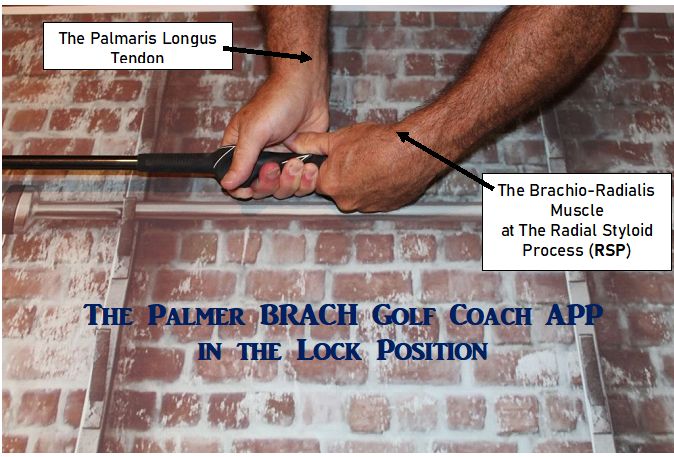
Colonel Hall: Looking at the photograph, Never cross my mind to mentally use kickboxing gloves to preset my wrists. How did you ever consider comparing the baseball swing vs. golf swing?
Boatright: That was a technique my grandfather, Hemingway Quinn (H.Q.) Boatright, taught me in setting up my baseball swing and later in my golf swing sequence. He believed that the baseball swing and golf swing were essentially the same swing. I have a super imposed photo comparing the wrist action in the golf swing to that of the baseball swing. The baseball swing was virtually the golf swing, but in a horizontal preset position. The challenge and obstacle facing the golfers he taught me was transitioning from a ball on the ground, or home plate, to a ball that is waist-high in baseball in a strike zone:
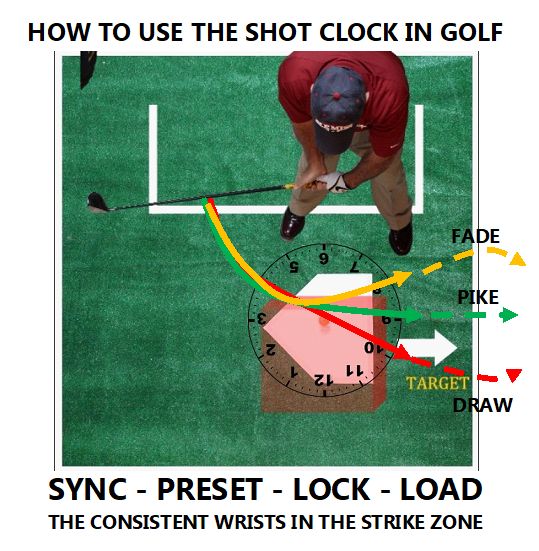
Question No. 5
Colonel Hall– The transitioning maneuver of presetting the wrists was a key in my golf swing sequence also. Without the preset, I wouldn’t have been able to determine that I had a correct golf swing sequence set up or on the correct swing plane. How did you establish your transition maneuver?
Boatright– I focus on my left thumb and my left Ulna Radial Styloid Processes to perform the PALMER Technique to perform what I refer to as Palmerflex back toward my right elbow. I took out of my backpack another laminated page illustrating the preset wrist technique, shown below.
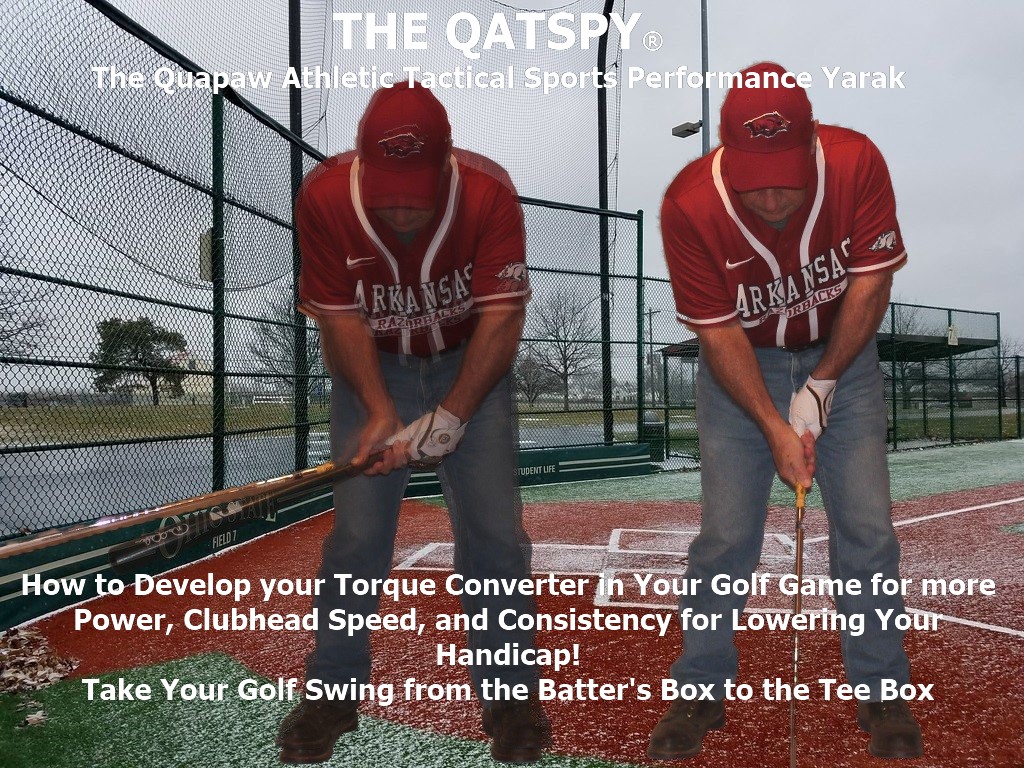
Colonel Hall– This is the very similar to the mental image and maneuver that I wanted to set up in my wrists before I took my left thumb or stick to the top of my swing. But I never seen a super imposed photograph like this of the wrist action in the golf swing compared to the wrist action in the baseball swing before, in this manner. They are actually the same.
Boatright: Yes sir they are the essentially the same wrist action technique. My final project for my Kinesiology class was the Ergonomics evaluation of the golf swing compared to the baseball swing. I used this super imposed photograph to support my findings.
Boatright: You mention your left hand, wrist, and left forearm, if there was one question I’m asked more than any other by students and fellow golfers, it is what you do with the right forearm?
Colonel Hall: I treat my right arm like a navigator for support, along just for the ride.
Boatright: That was the same philosophy of my grandfather. The left leads and the right rides. That is the only way I remember my grandfather’s golf swing technique. Left- Leads; Right- Rides.
Question No. 5
Boatright: “Have you ever read or seen a video series by Mr. Eddie Merrins, aka The Little Pro, where he focused on swinging the handle of the club and not the club. Similar to how you use your left thumb or stick to represent the handle of the club and how I use my right thumb to represent the clubface?”
Colonel Hall: “No I haven’t, but that is interesting how you use your right thumbs to represent the clubface. The more I think about it, that goes along with the same technique of having a strong, neutral, or weak golf grip by the placement of the right thumb on the handle of the golf club. I was doing the same thing, but I didn’t consciously go to that level or detail, like you did.”
Boatright: “If you think about the difference between the weak and the strong grip, most generally, it entails the placement of the right thumb on the handle of the club. This produce a open, square, or close clubface at impact. That was the reason I think swinging the handle of the club is an important concept in golf to improving the golfer’s game and in what you have proved.”
Question No. 6
Boatright: “So you interface with your golf swing by moving the virtual golf ball from the ground, up to your hands?”
Colonel Hall: “I found out by moving the ball from the floor of my cell to my thumbs gave me a better point of reference and feel in executing my golf shot. I had a more realistic golf shot and sound.”
Boatright: “You definitely proved that during the Pro-Am.”
Question No. 7
Boatright: “I’ve got to ask this question. What were your guards thinking when they saw you making a virtual golf swing with your hands, wrists, forearms, arms, and shoulders in your cell?”
Colonel Hall: “Probably, they were thinking that they have finally broken me, and I lost all touch with reality.”
Boatright: “If I had been your guard in a country where golf wasn’t a popular sport, or even heard of, I would think the same thing. That you lost your mind!”
For a more in-depth story of Colonel Hall’s story as a P.O.W., please refer to my article written in November of 2015: IMPROVING YOUR GOLF GAME WITH SIMPLE MENTALIZATION TECHNIQUE!
Also Download my E-BOOK: THE PALMER GOLF Swing Coach APP
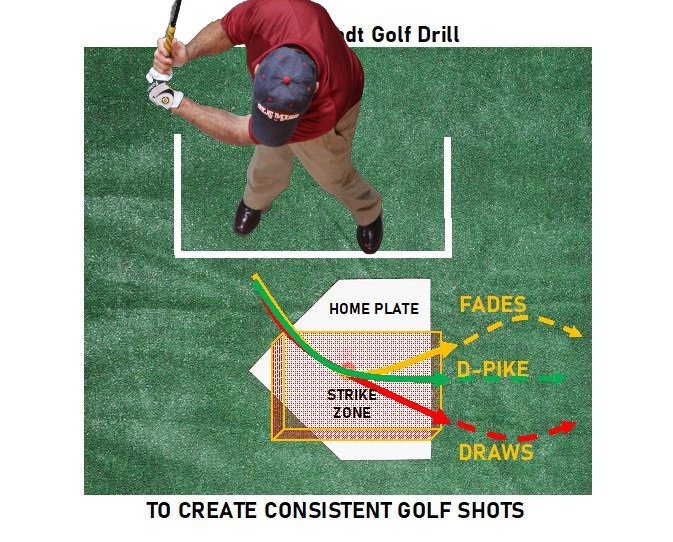
The Xerox Box Golf Project
Talking with Colonel George Robert Hall provided me with the important background information that I needed for my Xerox Box Golf Project. One of the biggest obstacles in golf is practicing how we mentally play. What the golfer thinks works one day doesn’t even work the very next day. This is the Dr. Jekyll and Mr. Hyde syndrome that I discussed my Xerox Box Golf Project.
Colonel Hall: Before ending our interview, Colonel Hall: “What is this Xerox Box Golf Project?”
Boatright: I explained to Colonel Hall that I had three Xerox boxes full of data, consisting of time-lapse photography and research data. Two boxes were labeled, “THIS DOES NOT WORK.” One three-quarter-filled Xerox box was labeled, “THIS WORKS.” The partially filled box, “THIS WORKS,” contained techniques that I was able to replicate day-after-day, without fail, for a consistent golf swing.
Colonel Hall: Which box does my interview go into?
Boatright: In the Xerox Box Labeled THIS WORKS, because you proved what I was taught by my grandfather, Hemi Quinn Boatright, since I was 12 year old.
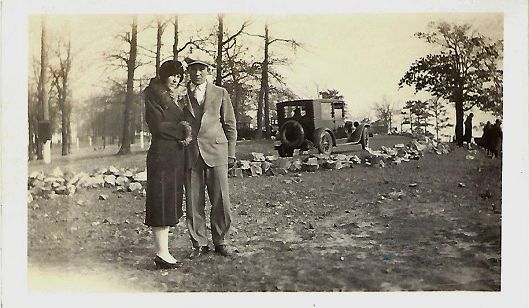
The Boatright Brothers:
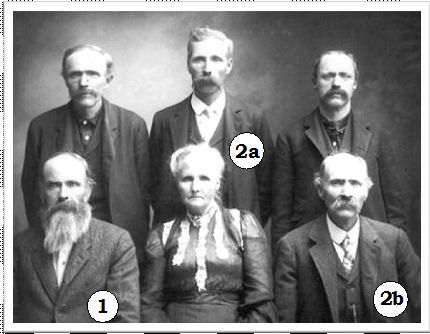
Colonel Hall: With a last name of Boatright, are you related to P.J. Boatwright, Jr.?
Boatright: He was my distant cousin, his 4 X great-grandfather and my grandfather were brothers.
What Colonel Hall provided me was his repetitiously practiced golf swing in his prison cell that proved the importance of the mental game of golf. Colonel Hall, playing on one of the biggest stages in golf, at a Pro-Am just six weeks after his release from North Vietnam’s Hanoi Hilton, proved Bobby Jones’ quote.
Colonel Hall also proved that downtime, or not being on a golf course, does not have to limit your golf practice or workout routine. Focusing on the wrist action in the golf swing proves two quotes by Yogi Berra:
- Baseball is 90 percent mental, and the other half is physical.
- You don’t have to swing hard to hit a home run. If you got the timing, it’ll go.
The ORANGE BUCKET CHALLENGE
To illustrate The PALMER GOLF Swing Coach APP Tech I have attached some videos with a three-part series that I did for WJTV-12 for their Sports ZONE Show leading up to the 2021 US OPEN. I refer to these three videos as The ORANGE BUCKET CHALLENGE:
The Bunt-Type Chip Shot
THE Orange Bucket Challenge Link INTRO
The Orange Bucket Challenge Walk-Through
The Orange Bucket Challenge Demo
The production crew at WJTV-12 made me a promo for me doing the video series for their Sports ZONE Show that consisted of all three Videos above in a 30 sec Video:
I have placed all my Golf Coaching and Fitness Techniques into my BOOK THE KASPER GOLF & FITNESS COACH LOWER GOLF/HEALTH SCORES defying the aging process:
I also took my Grandfather’s notes on Sports Psychology that he wrote in 1927 and put together THE SPORTS BIBLE, THE YELLOWSTONE PAPERS- COACH’S GUIDE TO SPORTS PERFORMANCE:
Sponsored By:
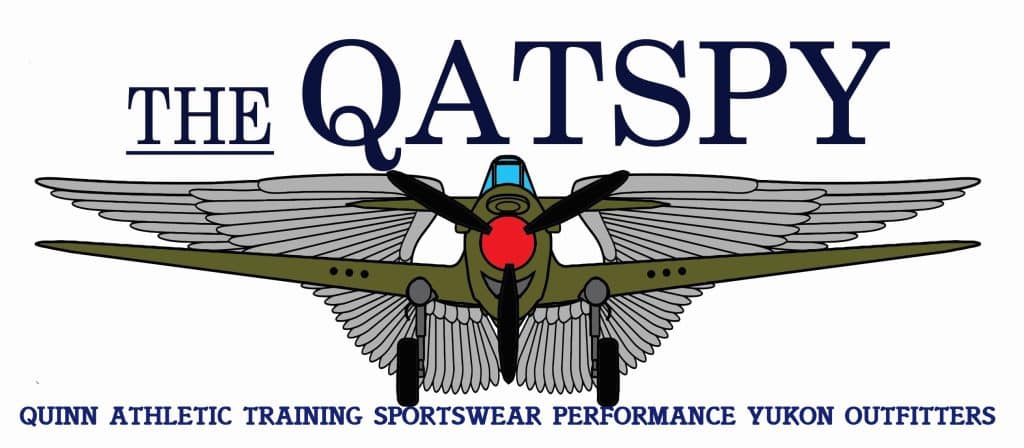
Website: espygolfapp.com/Store
1-888-514-1228
Contact:
Other Services that We Offer
Please contact us to arrange for a corporate golf Instructional outing, ■ How to take advantage of Sportsmanship and coaching techniques to apply it to your workforce and build a motivated team ■ and How to develop mental and physical fitness in the workforce for health and wellness. A stronger workforce is a better performing workforce.
My online store, THE QATSPY®, specializes in Sports performance apparel that offers both men and women clothing for the office and the weekend. I wear my A-2 Leather Flight Jacket traveling for business meeting clients and what I call my Buffalo Rider’s Jacket. This A-2 Leather Flight Jacket offers that Charisma look for all occasions.
Promoting Your Business
There’s is nothing that gets notice like our authentic Hemi-Quinn Bush Pilot Collection that we can personalize for companies, organizations, or individuals. Our Hemi-Quinn Bush Pilot Collection is better than business cards, but make sure that you carry plenty of business cards with you; because you will need them.

Your Best Fashion Statement is Your Fitness
After our photoshoot on January 07th, 2023, the ground crew challenged me to an AB Challenge thinking that I had gain weight over the holidays. The photograph below, was taken of me at age 65 on my INDIAN Scout Bobber 60. I credit my CASIMIR DIET & FITNESS System for my physical condition, and the condition of my skin.

OPERATION DOG TAGS (Defender Oasis Golf Tactical Athletic Geared Sports)
Operation Dog Tags- Helping Veterans Returning Home
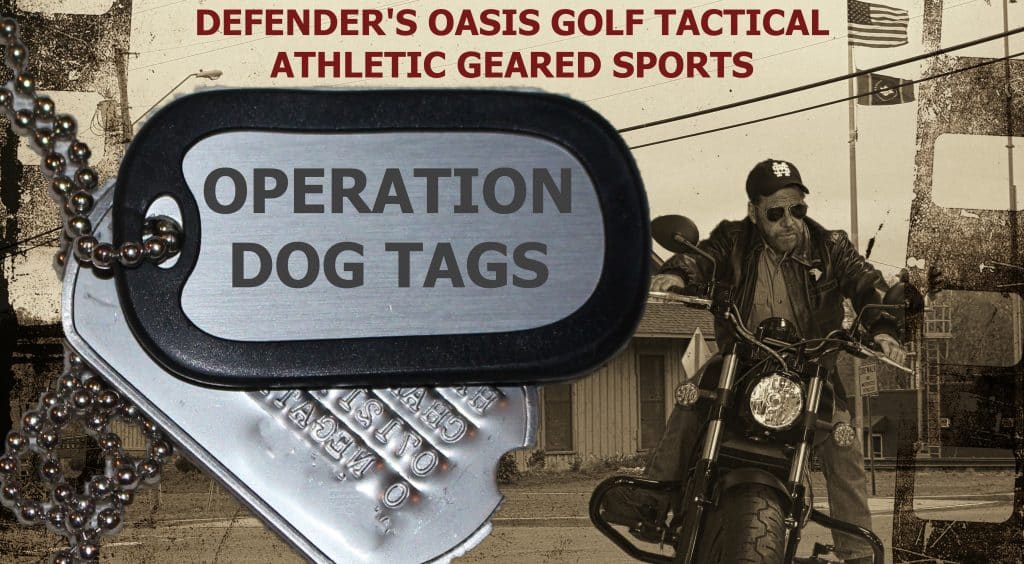
Operation Dog Tags- Helping Veterans Returning Home
Addressing the Veterans’ physical and medical conditions is why I have developed Operation Dog Tags to be able to provide a platform to help people to connect with other Veterans and develop a friendship. You don’t have to have all the answers, just the ability to listen to our Veterans’ stories.
The golf course offers our Veterans a mental and physical avenue to deal with the issues they are presently dealing with:
- Feeling apprehensive
- Feeling powerless
- Having a sense of impending danger, panic, or doom
- Having an increased heart rate
- Breathing rapidly
- Sweating
- Trembling
- Feeling weak or tired
One of the best opportunities we have to help our Veterans is to extend an offer to play golf with them and become a friend.
FREE- Below are links to Download The Operation Dog Tags:
Section 1– Operation DOG TAGS | GOLF CBT Intervention for PTSD
Section 2– Operation DOG TAGS | Objectives and Scope
Section 3– Operation DOG TAGS| STRUCTURE GUIDELINES
I would offer my services and support with coaching seminars and attending tournaments for Veteran Groups ONLY. If your tournament is within 150- miles of Jackson, Mississippi my services are FREE for VETERANS. For those out side this area, I just ask that my travel expense and hotel, if needed, be covered.
The way I support my OPERATION DOG TAGS is with proceeds from my Online Store items particularly my sportswear and my Training Downloads. Ten percent (10%) of all my proceeds from my Online Store goes toward my OPERATION DOG TAGS. I welcome and appreciate individuals, companies, and organization shopping my Online Store to help me support this service that I provide.
For events outside the 150- miles of Jackson, Mississippi, I request that there be a minimum of 25 in attendance that are Veterans.
All our Leather and Nylon Jackets can be personalized with your company or organization, logos and/or military service insignia like my Jacket. These jackets makes a perfect advertising and marketing strategy that comes with its own spokesperson, your customers, clients, and associates that work with you:
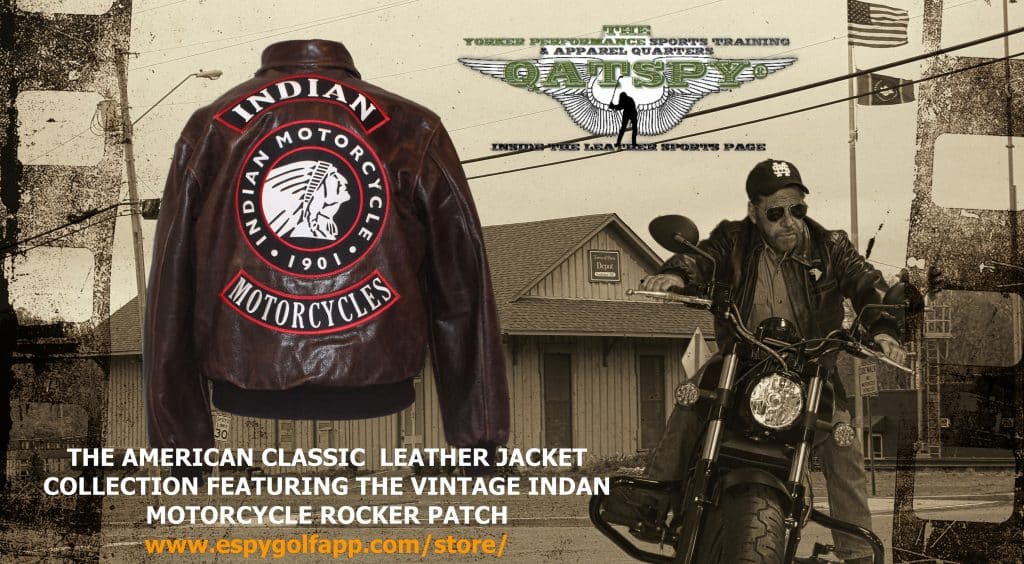
My QUAPAW Aviation Tactical Sportswear Performance Collection includes the U.S. Military Issued Leather and Nylon Flight Jackets and the Indiana Jones Leather Jacket that we supplied to the movie studio for Indiana Jones Movie. Below is my QUAPAW Aviation Tactical Sportswear Performance Collection, that also includes the TOPGUN 2 Movie Jackets like the two G-1 Leather and CWU-P45 Nylon Flight Jackets like the two Maverick will be wearing in the movie:

